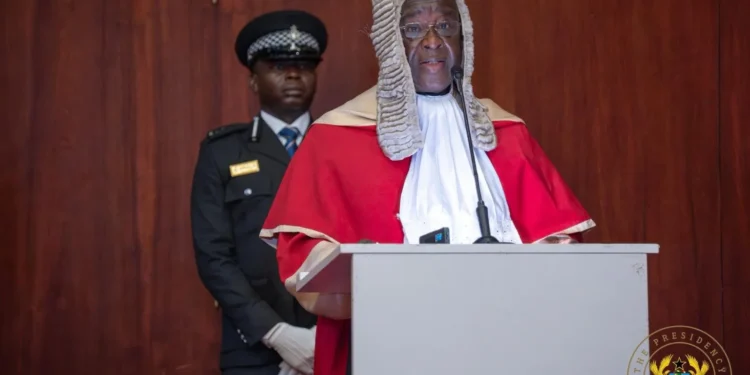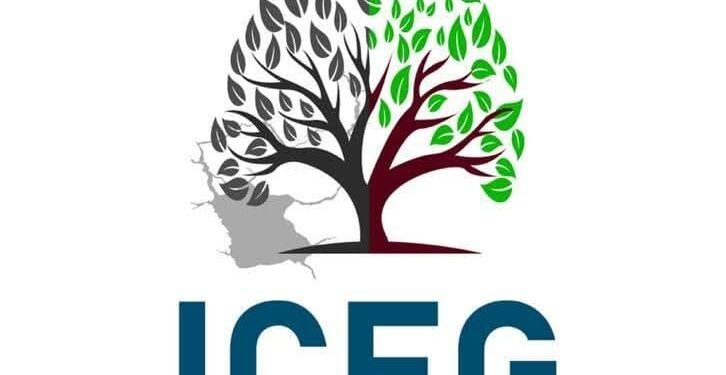Ghana’s management of its public debt has come under sharp scrutiny following a surprise revelation that government officials overstated national liabilities by a staggering $14 billion.
According to Bright Simons, Vice President of policy think tank IMANI Africa, the recent disclosure appears less a breakthrough and more a glaring example of delayed transparency and structural dysfunction within the country’s public finance system.
The announcement, which was celebrated in the 2024 Auditor General’s Report, stems from a reconciliation exercise involving the Ministry of Finance, the Accountant General, and the Bank of Ghana.
However, Simons insisted that this “miraculous development” likely became known to the authorities at least three months prior to its public unveiling, given the Auditor General’s timelines for completing reports.
“This month, the Ghanaian authorities revealed that they had overstated the country’s public debt by a whopping $14 billion! Apparently, the Auditor General took a much closer look at reconciliation notes across the Accountant General, Finance Ministry, Central Bank, etc., and, voila, new facts came to life!”
Bright Simons
For Simons, the question is not just how this significant error was discovered, but why a formal restatement of the public accounts took so long.
The delay, he suggested, undermines public confidence and raises concerns about the internal processes used to monitor, track, and verify the state’s financial obligations.
Simons noted that the timing of the announcement benefits the government politically and fiscally.
Just months ago, Ghana’s efforts to meet International Monetary Fund (IMF) targets—particularly reducing public debt to 55 percent of GDP—seemed nearly impossible.
Now, following this recalculation and a dramatic currency reflation, the government claims to have cut its debt-to-GDP ratio down to around 44 percent.
Simons questioned the credibility of such a sharp drop, pointing out that debt servicing costs, especially those tied to legacy obligations, remain largely unaffected by accounting adjustments.

He acknowledged that Ghana’s financial managers have earned the right to celebrate, but only cautiously.
While the latest data paints a more optimistic picture, some fiscal indicators are not so easily influenced by exchange rates or ledger tweaks. Among them, “the cost of servicing legacy debt” burdens continues to weigh heavily on the national purse
Simons further indicated that the sustainability of Ghana’s strategy to reduce the cost of new borrowing remains uncertain.
More clarity is expected by the fourth quarter, once the full impact of recent decisions becomes evident. But the short-term gains, he warned, may be masking long-term structural flaws.
Broken Systems Behind Mismatched Public Debt Numbers
The deeper concern, according to Bright Simons, is not just the revised numbers—it’s what they reveal about systemic weaknesses in the government’s financial infrastructure.
He argued that the reconciliation issues exposed by this event reflect persistent failures in cross-agency coordination and account management.
These weaknesses, he explained, were supposed to have been addressed by reforms like the Ghana Integrated Financial Management Information System (GIFMIS).

“In fact, there have been World Bank initiatives, such as e-Ghana and e-Transform, that devoted tens of millions of dollars to strengthening government IT functions, including GIFMIS, the government-wide public finance platform.
“My ongoing review of the World Bank’s portfolio in Ghana flagged the failure and/or underperformance of some of these initiatives. GIFMIS is a major one.”
Bright Simons
He revealed that at one stage, nearly 90 percent of government payments were being made outside the GIFMIS framework, raising serious questions about transparency and traceability.
Official reviews may have praised the system’s adoption, but Simons said the reality paints a different picture.
A large portion of government financial activity, he argued, continues to take place off the official books, making weak reconciliation both understandable and, in some cases, “convenient.”
He explained that when major segments of public financial data remain unrecorded in centralized systems, discrepancies are almost inevitable. And worse, such gaps in tracking can be exploited to present misleading fiscal narratives or to delay accountability.
Simons linked these recurring failures to a broader theory he calls Katanomics, which highlights a kind of institutional “national dyslexia.”

This concept refers to the inability of state leadership to learn from previous policy missteps and to implement reforms that actually strengthen long-term governance.
In his view, the chronic inability to apply past lessons to present challenges reflects deeper flaws in policy execution and strategic planning.
He emphasized that rather than taking pride in short-term wins driven by technical recalibrations, national leadership should focus on addressing the root causes of dysfunction.
These include improving inter-agency communication, enforcing compliance with financial systems like GIFMIS, and ensuring that large-scale digital infrastructure projects funded by international partners actually achieve their stated goals.
At its core, the issue is not merely about adjusting figures on a balance sheet. It’s about building a system of governance where public debt is managed transparently, consistently, and with the public’s interest at the forefront.
Ghana’s future fiscal credibility depends not just on correcting mistakes, but on preventing them from happening in the first place.























